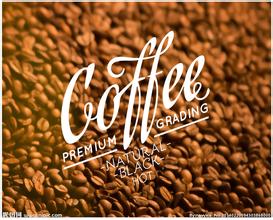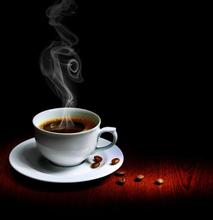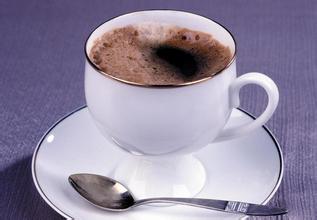Reference to the proportion of gouache and flour brewed in different varieties of coffee
Reference to the proportion of gouache and flour brewed in different varieties of coffee
The best combination relationship between coffee concentration and coffee extraction rate (not suitable for espresso brewing method). The vertical axis represents the concentration of coffee, or TDS (total dissolved solid), expressed as a percentage of the actual coffee product. The horizontal axis represents the extraction rate (yield), expressed as a percentage of the amount of coffee powder dissolved in water to the original dry coffee powder dose. The lower the chart, the lower the coffee concentration, and vice versa, the higher the concentration. Different people's preference for coffee may be distributed in various areas of the picture, after all, the preference for coffee concentration varies from person to person. The brewing ratio directly affects the concentration of coffee. Coffee that falls in the central gray area is generally considered perfect: its concentration and extraction rate are well balanced (the extraction rate is between 18% and 22%, and the concentration is between 1.1% and 1.3%), and the product is sweeter, more mellow and more transparent. The diagonal gray line represents the extraction rate, which succinctly shows what kind of cooking product is too light or insufficient extraction, and what is too thick or too bitter
The problem of the ratio of powder to water, the so-called question of quantity. The proportion of trickling filter is generally 1 gram of powder than 10 to 15 milliliters of water. The regular size of a coffee cup is between 200 and 300 milliliters. You can make it with 20 grams of coffee powder. Italian coffee machine, 7 to 8 grams of powder to make about 30 milliliters of coffee (so-called espresso), pay attention to the time control between 20 and 30 seconds. Netizens can find the right proportion of powder and water in these ranges and get their favorite taste.
The freshness of coffee can also change the extraction process. Especially fresh coffee beans release large amounts of carbon dioxide, a gas that acts like an invisible barrier that prevents coffee from coming into contact with water. For this reason, the coffee beans used to brew espresso must be placed at least 5 days in advance, otherwise the air pressure on the surface of the coffee beans will compete with the gas and water in the filter, and the coffee will eventually suffer. Of course, any coffee beans should be left at rest for 8 hours before grinding and brewing, so as not to interfere with the cooking process by carbon dioxide.
The scale is right, but the brewing proportion is not right, and it is not easy to make delicious coffee. In the process of learning, we need to drink repeatedly and test the concentration. It is found that the best brewing ratio, that is, the amount of coffee beans is higher than that of black coffee, which is between 1 cup, 12 grams and 13 milliliters, which is equivalent to the four major gold cup systems in Europe and the United States. the yield of coffee beans is 14.5 grams 115.5 per gram of raw water, and it is most likely to hit the golden range of 18% 22% and 1.15% 1.35% of the "golden cup moment". Instead of brewing espresso with tangled flavor spectrum or thin coffee with too strong water flavor. It is believed that the brewing ratio of most hand-brewed coffee lovers should fall within this range. The most commonly used hand-brewing ratio in Chongqing is 1: 12: 1: 13, that is, 1: 14.5: 1: 1: 15.5 according to the Golden Cup Criterion. Of course, some hand-brewed coffee lovers use a more extreme brewing ratio. For example, those who like heavy flavors are often hand-brewed at 1:10 (that is, the golden cup ratio is 1-12. 5), using a higher concentration to make up for the deficiency of extraction, that is, only to extract low molecular weight and medium molecular weight sour and sweet flavors to avoid extraction of high molecular weight bitter substances, although it can also make mellow delicious coffee, but the concentration is too high, it is not easy for ordinary people to accept. Moreover, it is a waste of coffee powder and should not be encouraged. In fact, good and mellow coffee can be made at a more normal 1:12 (that is, a golden cup ratio of 1mm). Interestingly, there are also some light coffee lovers who like to brew by hand in a diluted proportion below 1:14, but do not underestimate these coffee lovers, whose taste buds may be sharper and can be appreciated in a variety of layers from the thinner coffee liquid. If you have to use 1:10 to brew in order to feel good enough, it may be that the taste is too dull and depends on high concentrations to stimulate it.

Important Notice :
前街咖啡 FrontStreet Coffee has moved to new addredd:
FrontStreet Coffee Address: 315,Donghua East Road,GuangZhou
Tel:020 38364473
- Prev

What is the relationship between altitude and coffee beans the relationship between altitude and temperature
What is the relationship between altitude and coffee beans the relationship between altitude and temperature coffee beans grown in high altitude areas are hard, dense and have the potential to give full play to their special flavor. The really amazing coffees are grown between 4000 and 6000 feet above sea level, and these beans are picked carefully only during the mature season. The rating of Central American coffee is based on the altitude at which the coffee grows.
- Next

News about coffee-negative news about coffee falling in love with tea
News about coffee-negative news about coffee falling in love with tea according to an online survey: 47% of netizens like to drink instant coffee, while 72% value coffee taste the most. Chinese people's habit of drinking coffee probably began after the 1990s, and now many urbanites have become dependent on coffee. Although the annual consumption of coffee in China is only 200000 tons, the per capita consumption is delivered at a rate of 30 per cent.
Related
- What brand of black coffee is the most authentic and delicious? what are the characteristics of the flavor of the authentic Rose Summer Black Coffee?
- Introduction to the principle and characteristics of the correct use of mocha pot A detailed course of mocha pot brewing coffee is described in five steps.
- Which is better, decaf or regular coffee? how is decaf made?
- How much is a bag of four cat coffee?
- How about four Cat Coffee or Nestle Coffee? why is it a cheap scam?
- Which is better, Yunnan four Cats Coffee or Nestle Coffee? How about cat coffee? is it a fake scam? why is it so cheap?
- How about Cat Coffee? what grade is a hoax? which instant coffee tastes better, four Cat Coffee, Nestle Coffee or G7 coffee?
- Process flow chart of coffee making-Starbucks coffee making process what coffee tastes good at Starbucks
- The top ten best coffee beans in the world Rose summer coffee or Tanzanian coffee tastes good
- Yunnan four cat coffee is good to drink?_four cat coffee is a big brand? four cat blue mountain coffee is fake?

